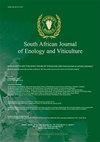葡萄压榨温度对msamthode Cap经典葡萄酒有机酸及酒艺特性的影响
IF 1.1
4区 农林科学
Q4 FOOD SCIENCE & TECHNOLOGY
引用次数: 2
摘要
保持葡萄酒的化学成分对葡萄酒工业至关重要。尽管葡萄酒的糖酸平衡具有首要的感官重要性,但单个酸和酿酒参数同样重要。本研究的主要重点是研究葡萄收获时的温度对两个地区的葡萄品种生产的Methode Cap Classique(MCC)葡萄酒在酿酒过程中的酿酒挥发性酸度(VA)、可滴定酸度(TA)、pH和酒精水平以及有机酸(柠檬酸、苹果酸、丙酮酸和琥珀酸)特性的影响。霞多丽和黑皮诺葡萄来自Robertson(温暖)和Elgin(凉爽)地区,在进一步加工之前,分别经过不同的温度处理,即0、10、25和30°C,包括压榨、一次发酵、混合、提拉奇、二次发酵、去壳和吐出。葡萄温度是Robertson葡萄酒pH值显著升高(0和10℃)和Elgin葡萄酒pH值较低(0℃)的主要原因。这两个地区的霞多丽基酒都是在较低的温度(0和10摄氏度)下用葡萄酿造的,其苹果酸和琥珀酸含量较高,而这两个区域的黑皮诺葡萄酒的特点是苹果酸、柠檬酸和丙酮酸含量较高。只有在两个地区的葡萄酒经过二次发酵后才检测到丙酮酸。据我们所知,本研究首次调查了不同地区和不同生产阶段葡萄温度对MCC葡萄酒的酿酒学和有机酸特性的影响。本文章由计算机程序翻译,如有差异,请以英文原文为准。
Impact of grape temperature at pressing on organic acids and oenological characteristics of Méthode Cap Classique wines
Maintaining the chemical composition of a wine is essential for the wine industry. Although the sugar-acid balance of a wine is of primary sensory importance, individual acids and oenological parameters are equally important. The main focus of this study was to investigate the impact of grape temperature at harvest, on the oenological volatile acidity (VA), titratable acidity (TA), pH and alcohol levels and organic acid (citric, malic, pyruvic and succinic) characteristics of Methode Cap Classique (MCC) wines during winemaking, produced from grape cultivars obtained from two regions. Chardonnay and Pinot noir grapes were obtained from Robertson (warmer) and Elgin (cooler) regions and were subjected to different temperature treatments, i.e. 0, 10, 25 and 30 o C before further processing, including pressing, primary fermentation, blending, tirage, secondary fermentation, riddling and disgorging. Grape temperature was mostly responsible for a significantly higher pH of Robertson (0 and 10oC) and lower pH (0oC) of Elgin post-tirage wines. Chardonnay base wines from both regions that were vinified from grapes at lower temperatures (0 and 10 o C) were richer in malic- and succinic acid, while Pinot noir wines from both regions were characterised by higher malic-, citric- and pyruvic acid. Pyruvic acid was only detected after the secondary fermentations in wines from both regions. To our knowledge, this study is the first to investigate the influence of grape temperature on the oenological and organic acid characteristics of MCC wines in different regions, and throughout different production stages.
求助全文
通过发布文献求助,成功后即可免费获取论文全文。
去求助
来源期刊
CiteScore
2.50
自引率
7.70%
发文量
1
审稿时长
>36 weeks
期刊介绍:
The South African Journal of Enology and Viticulture (SAJEV) publishes full-length original Research Papers, Research Notes and Review Papers on all subjects related to enology and viticulture. The SAJEV does not accept articles published in, or submitted to, other journals.

 求助内容:
求助内容: 应助结果提醒方式:
应助结果提醒方式:


